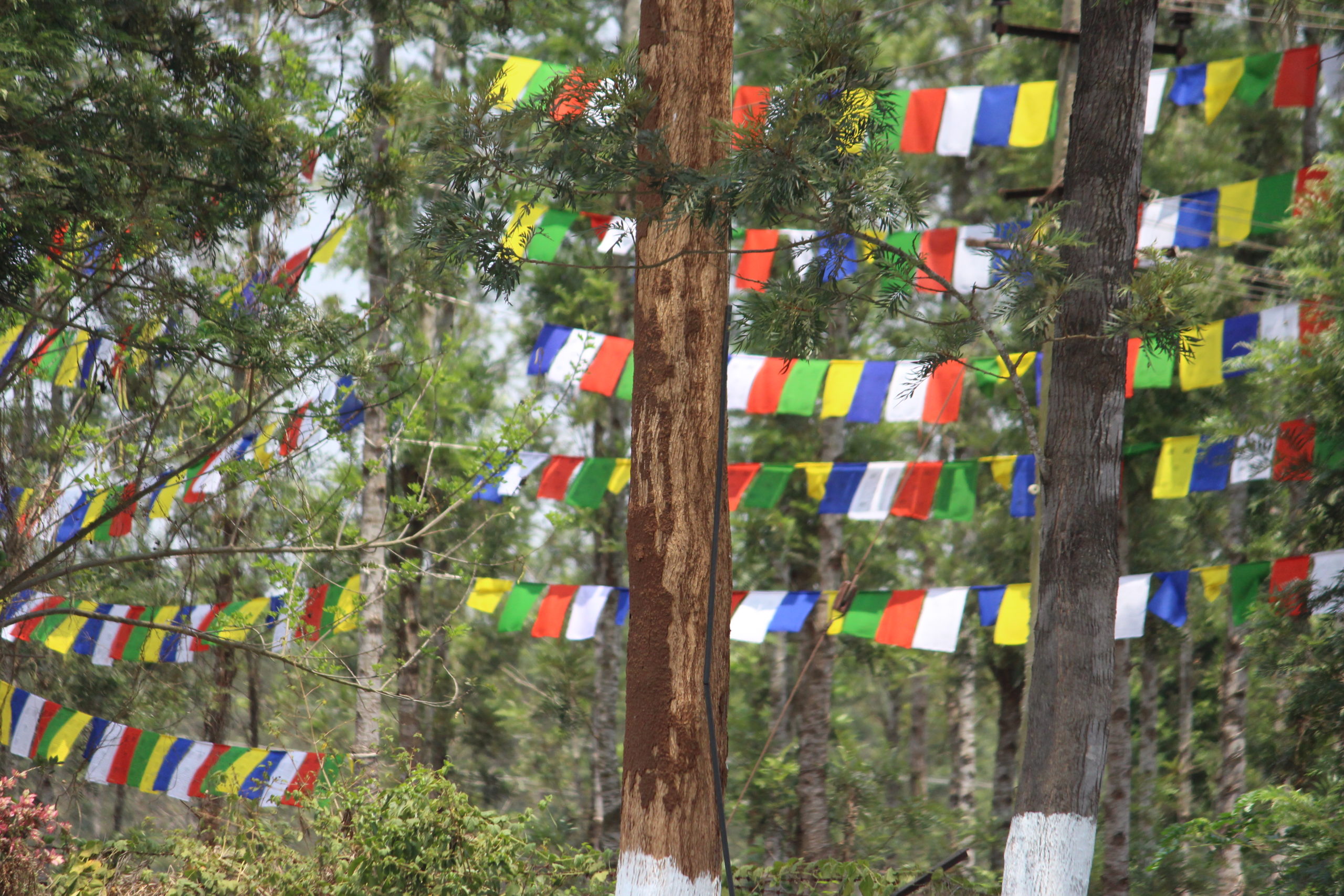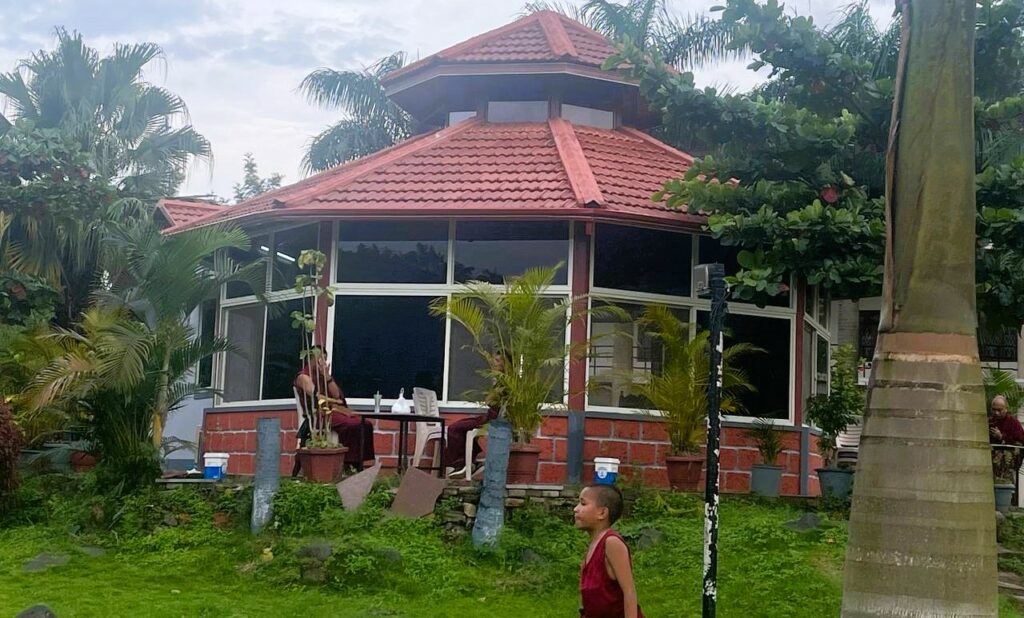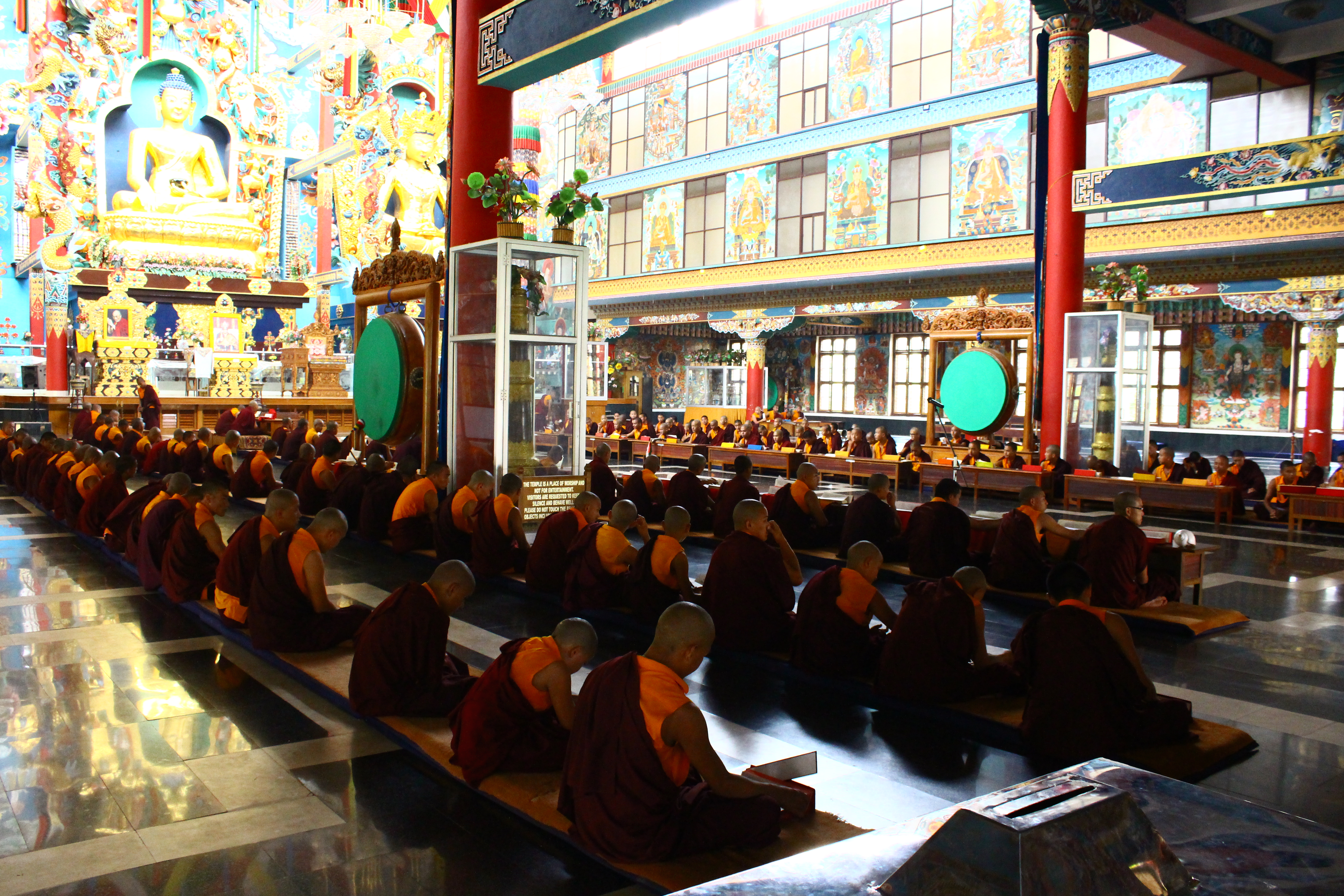A Meditative Tea at Sera Je Monastery


MUHAMMED NOUSHAD drinks the ginger-lemon-honey tea prepared by Tibetan monks at Sera Jey Monastic University in Bylakuppe and reflects on the importance of The Way of Tea in Buddhist paths.
The Yiga Choeling Cultural Center of Sera Jey Buddhist monastery has a small tea shop in front of it, a round-shaped hut that opens only in the evening. In the beautifully landscaped meadow, you see monks sitting and sipping tea. Away from the tourist hustle bustle of the Bylakuppe golden temple and the adjacent Tibetan market, this area is not known to many people. Most of the visitors see the golden temple and return. Just three kilometers interior, you find Sera Jey and Sera Mey monastic universities, exquisitely painted temples, libraries and typical Tibetan streets. An extraordinarily peaceful place. Suddenly you feel a touch of magical realism, as if you are in another country, remote and exotic, exploring through its exiled traditions.
The tea shop serves a stimulating special tea with heavenly taste: ginger-lemon-honey tea! With a Tibetan flavor and ambiance. What a mixture. This pretty small shop is mainly intended for the monks studying in the monastic university and occasional visitors who stretch their visit beyond the golden temple. I have found myself sitting here many times, with all its becalming stillness and serenity, very slowly sipping its distinct taste, looking at the meditative rhythm of monks or young Tibetan boys or girls preparing it for other customers.
The otherwise hushed landscape of rural Karnataka in Kushalnagar area, in Mysore district, with the cool weather of adjacent Kudak hills, might have been a soothing abode for the fleeing Tibetan refugees when India generously hosted them in the early 1960s after the Chinese invasion. I remember the award-winning film The Cup being shot in the monasteries of Bylakuppe. In one of my earlier visits, our friends even spotted some of its locations. The film describes the hilarious struggles of some passionate young monks to watch World Cup football matches on TV despite the fact that they are not allowed to do so by the monastery authorities. In subtle ways, the film tries to relate how modernity and religious traditions, precisely Buddhist spiritual traditions, undergo a conflict of interests over the generation gap phenomenon and how the tradition finds strength to reconcile with the challenges technology poses. The tea is reflective. The taste buds take you for a trip of meditation.
The monks have a sophisticated way of cooking the special ginger-lemon-honey tea: first of all, they don’t serve it in a usual tea glass – there are big, tall glasses that you usually find in juice shops. First, chopped ginger goes into it, then honey is poured over, almost to cover the ginger; next lemon juice (without water) is sprinkled over. Now, one third of the glass is full, then from a traditional jug, already prepared tea (without sugar) is poured into the glass and now one third is left. There they pour hot water from the coffee machine. The tea is ready.
The medicinal worth of the ingredients contributes to the freshness of body and spirit. Its aromatic lure instantly tempts your nostrils. The mood gets refreshed, the taste just brings back your tea loving buddies to memory. You remember the importance of tea in spiritual traditions, particularly in Buddhism. Tea to Buddhism was what wine to Catholicism. An elaborate and nuanced tea culture grew through the paths Buddhism traveled and nourished. The Japanese tea ceremony has been very remarkable in this regard, teaching people mindfulness and the openness of heart through tea meditation. Sen no Rikyu called it ‘The Way of Tea’. My own humble initiation to this ritual was at a Zen & Aesthetics workshop organized by Kamura Art Community at Narayana Gurukulam, near Ooty. Our much loved facilitator of the workshop, Gita Gayatri, a Zen priest who has served many years at the Zen Centers of Tassajara and San Francisco, trained us in doing it with patience, grace and compassion. It teaches us that even the simplest and the most ordinary things in our daily life could be very beautiful and deeply meaningful. Our mentor Gayatri learned the ritual from the US and she reminded us: “this is an Indian version of an American version of a Japanese version of an Indian custom,” meaning the ritual originally traveled from India to Japan and then to America and then towards us. The Japanese added the exquisite finesse it currently has. The ceremony has several styles and adaptations.

“It is all about mindful preparation, a deep prayer, thankfulness to the tea and everyone who helped to get you the tea, an aware sipping of tea, by sitting comfortably at a nice place.” Photograph by P. P. Mubashir
In fact, a tea meditation is possible every morning, for anyone. It is too simple, deceptively simple. It is all about mindful preparation, a deep prayer, thankfulness to the tea and everyone who helped to get you the tea, an aware sipping of tea, by sitting comfortably at a nice place. In somebody’s company or all alone. Silence helps to reflect on the colour of the tea, its aroma, taste, warmth, the shape and texture of the cup you hold, the paths the tea dust has traveled to meet you and enter your body and spirit.
This simple beverage called tea kept the monks alive and awake, through the meditations and the journeys of the spirit. This time, at Sera Jey monastery tea shop, I was drinking the yummy ginger-lemon-honey tea with my friends of MBL Media School. We passed the tea from one person to another; you can see people’s faces getting animated. The flavor, aroma, taste! Most of the students liked it and some did not. The tea shop, the monks who served tea, the soothing mood of the monastery, and above all the meditative tea, remained with us even after we left the place.
[This was originally published in Chaiwallas of India, an amazing project on tea narratives from across India, run by Resham Gellatly and ZackMarks. The link is here: http://chaiwallahsofindia.com/2016/04/meditative-tea-sera-jey-monastery/ ]